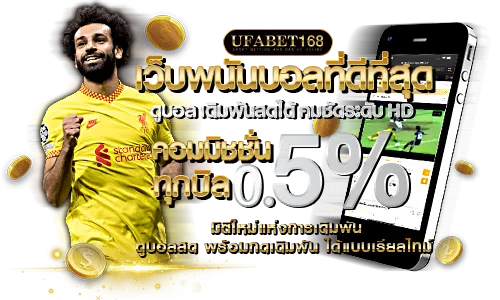As indicated in the table above, the corresponding price (LTP) to the call and put option indicates the moneyness of the strikes. Working with an adviser may come with potential downsides such as payment of fees (which will reduce returns). There are no guarantees that working with an adviser will yield positive returns. The existence of a fiduciary duty does not prevent the rise of potential conflicts of interest. SmartAsset Advisors, LLC (“SmartAsset”), a wholly owned subsidiary of Financial Insight Technology, is registered with the U.S. Finally, don’t think that you make money only when an option is in the money.
The strike price calculation is a delicate balance of quantitative inputs and market speculation, which, when skilfully executed, aligns with both the investor’s objectives and the dynamics of the options market. Picking the strike price is a key decision for an options investor or trader since it has a very significant impact on the profitability https://forexhero.info/ of an option position. Doing your homework to select the optimum strike price is a necessary step to improve your chances of success in options trading. Assume that you have identified the stock on which you want to make an options trade. Your next step is to choose an options strategy, such as buying a call or writing a put.
- Intuitively, the greater the probability suggested by delta, the more expensive the option will be.
- Because they paid $53 for the option, the stock would need to trade for more than $733 for the trade to be profitable.
- An option’s delta is how much its premium will change given a $1 move in the underlying.
- Strike prices are not just arbitrary figures; they influence the profitability and risk level of an options contract and are key to optimizing an options trading strategy.
Let’s say the stock rises to $750 and the trader exercises the option and sells the shares. Options trading entails significant risk and is not appropriate for all investors. Before trading options, please read Characteristics and Risks of Standardized Options. Supporting documentation for any claims, if applicable, will be furnished upon request.
Join Over Half a Million Premium Members Receiving…
This distinction influences an investor’s decision on whether to execute an option or let it expire. An investor’s risk tolerance is the final decisive element in choosing a strike price. Consumers with lower risk tolerance might prefer options that are in-the-money (ITM) or at-the-money (ATM), which tend to have a higher likelihood of profitability, albeit with lower potential returns.
Call Spread Options: An In-Depth Guide to Understanding and Using This Trading Strategy
Options are financial contracts that give the buyer the right, but not obligation, to buy or sell the underlying stock at the strike price during the term of the option. An option giving the right to buy is a call option and an option giving the right to sell is called a put option. The strike price is the price in an options transaction at which the underlying stock (or other asset) can be bought or sold. For call options, that price is the price the underlying stock can be purchased and for put options, that price is the one at which it can be sold.
If the stock did rise above $110, you could still exercise the option to pay $110 even though the market price is higher. (Put options would work similarly but give you the right to sell rather than buy the underlying). Conversely, the call option seller would be obligated to sell the underlying asset at the contract’s predetermined strike price if the buyer chooses to exercise the option. The risk of assignment increases if the option is deep-in-the-money and close to expiration. When deciding on the appropriate strike price for an options contract, investors must meticulously consider several pivotal elements. These include assessing the current level of market volatility, understanding the intricacies of option expiration dates, and aligning option choices with one’s personal risk tolerance.
How to choose the right strike price
Instead, it indicates the relationship of the stock to the strike price and whether an option would retain any value if the option expired today. So in-the-money options would retain at least some value, while out-of-the-money options would be worthless. An option’s strike price is preset by the exchanges, and often comes in increments of $2.50, though it may come in increments of $1 for high-volume stocks. So a normal-volume stock might have options with strikes at $40, $42.50, $45, $47.50 and $50, while a high-volume stock could have strikes at every dollar increment from $40 to $50, for example.
‘Out of the money’ options, which have no intrinsic value, carry higher risk as the underlying asset must experience a significant price movement for the option to become profitable. ‘In the money’ options, on the other hand, are less risky as they already have intrinsic value. Option premiums, the cost of buying an option, are influenced by the strike price. If the option is ‘in the money,’ the premium will be higher due to the intrinsic value. Conversely, ‘out of the money’ options only have time value, resulting in lower premiums.
The fluctuations in the financial markets affect option valuation, particularly through the metric known as implied volatility, which reflects investor predictions of how much a stock will move in the future. An option is the right, but not the obligation, to buy or sell a stock (or some other asset) at a specific price by a specific time. An option has a fixed lifetime and expires on a specific date, and then the value of that option is settled among its buyer and seller. The option expires with either a definite value or worthless, and the strike price is the key to determining that value. In this case, since the market price of the stock is lower than the strike prices for both Carla and Rick’s calls, the stock would not be called.
The strike price on the day of expiry can also be referred to as the “exercise price”. Likewise, you might look for put options that have a strike price that’s equal to or above the stock’s trading price. Again, this can help with minimizing the odds of losing money if you decide to exercise your option to sell. A more aggressive investor, on the other hand, might take the reverse approach.
Below, we dissect the strategic timing for engaging with these derivative contracts, focusing on both call and put options. The strike price is a key factor in the value of an options contract, and so it’s vital to know the relationship between the strike price and the underlying stock’s price to figure an option’s value. For example, a call option would specify the option’s strike price and expiration date – say, December 2023 and $45 – or what traders might call December 45s. They should refrain from writing covered ITM or ATM calls on stocks with moderately high implied volatility and strong upward momentum.
Therefore, a thorough understanding of the strike price is essential for successful options trading. Some traders may feel extremely bearish about the stock’s prospects over the next six months. A trader with this mentality may buy a far-out-of-the-money put option with a $90 strike price for a $0.50 premium. Many of these contracts expire worthless, but they don’t cost as much money to get started. That’s the attractive nature of these contracts, and if they become in the money, these contracts can yield significant profits.
Similarly, for the put options, if the Nifty50 is trading at 16,200— the 16,200 strike price will be termed “at the Money” (ATM). The 16,100 strike price will be referred to as “out of the Money” (OTM), and the 16,300 strike price will be known as “in the Money” (ITM). Founded in 1993, The Motley Fool is a financial services company dedicated to making the world smarter, happier, and richer. The Motley Fool reaches millions of people every month through our premium investing solutions, free guidance and market analysis on Fool.com, top-rated podcasts, and non-profit The Motley Fool Foundation. Knowing when to exercise an option can be tricky, and it hinges on both the strike price of the option and the timing.
The strike price is the price at which the underlying asset, such as a stock or a commodity, can be bought or sold by the option holder. The number and range of strike prices per expiration vary depending on the dollar price of the underlying security and the demand for the security’s options contracts. For example, some higher-priced stocks may have strike prices in $5 increments ($100, $105, $110, etc.), while some stocks may have strike prices in $1 increments ($50, $51, $52, etc.).
This means choosing call options with a strike price that’s higher than the stock’s share price or put options with a strike price that’s below the stock’s share price. If a stock is trading below its strike price, you could choose to sell it to make a profit. Even if ema forex the stock’s price dips to $10 you could still sell your shares for $15 each to realize a profit of $5 per share. Conversely, the optimal window for exercising put options arises when the underlying security’s market price falls below the put options strike price.
The $120 strike price will initially yield more profits as the stock price goes down. However, the $115 strike price put will outperform the $120 strike price put option if the stock continues to fall. Buying a put contract with an at-the-money strike price compared to an out of the money put can increase the likelihood of breaking even.







